Historic Czech town Litoměřice // Historicke Česke mesto
Mesto Litoměřice bola ďalšia v poradí tretia zastávka môjho výletu po Českých mestách. Mesto sa nachádza na sútoku medzi riekou Ohře a Labe. Približne 70km od hlavného mesta Prahy.
Litoměřice was the third stop of my trip to Czech cities. The city is located at the confluence of the Ohře and Elbe rivers. It is about 70 km from the capital Prague.
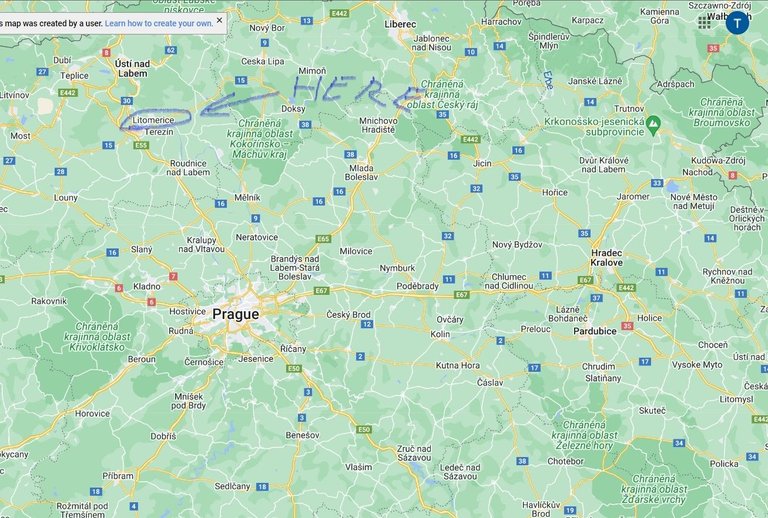
Do centra mesta sa dostanete po ceste číslo 15 až na kruhový objazd ktorý je branou k Mestskej pamiatkovej rezervácie. Odtiaľ sa oplatí zájsť si na informácie kde vám zadarmo poskytnú mapu z vyznačením najkrajších pamiatok, ktorých je tu neúrekom.
The town centre can be reached by road number 15 up to the roundabout which is the gateway to the Municipal Conservation Area. From there it is worth going to the information desk where you will be given a free map showing the most beautiful sights, of which there are many.
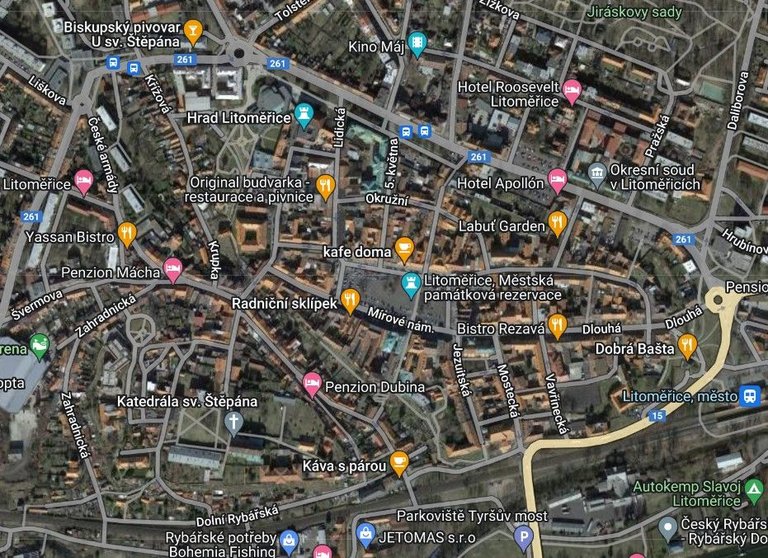
Budova starej radnice je prvou zastávkou po prechádzke na námestí. Jej základy ostali v gotickom slohu, na ktorý sa vďaka ďalším rekonštrukciám pridávali prvky renesancie. V 16. storočí bola po masívnom požiari mesta zrekonštruovaná pod rukami majstra Pavla ktorý sa však dokončenia nedočkal.. Prácu po ňom zobral majster Jiři. V roku 1916 sa plynom spodnej vody, jej stredná časť zrútila, rekonštrukcia trvala 10 rokov. V tejto podobe je tu dodnes.
The Old Town Hall is the first stop after a walk in the square. Its foundations remain in the Gothic style, to which, thanks to further renovations, Renaissance elements have been added. In the 16th century, after a massive fire in the town, it was reconstructed under the hands of Master Pavel, who did not live to see its completion. In 1916, the middle part of the tower collapsed due to groundwater gas, the reconstruction lasted 10 years. In this form it is still there today.
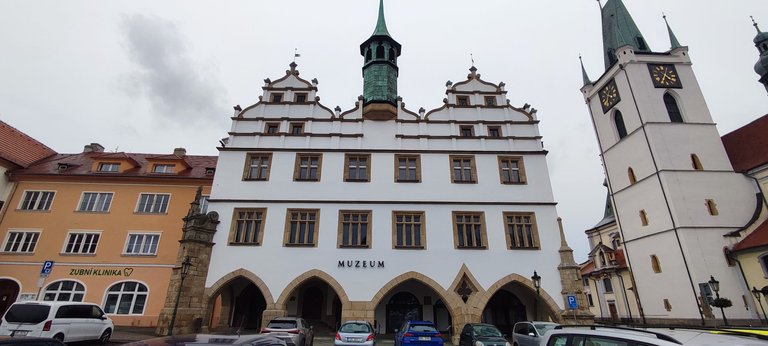
Nová radnica taktiež nazývaná "Dom pod bani", alebo "dom Kalich"
bol ďalším skvostom, ktorý sa nachádza na námestí. Tato stavba je symbolom
utrakvistické odnože cirkvi, nazývaná taktiež kališníci(staro-kališníci). Ta bane.. kalich je odkazom na ich vieru. Dom sa niesol v gotickom slohu po rekonštrukcii rokoch 1570 až 1580 renesančne prestavaný. Ďalšia prestavba nasledovala až o 300 rokov, presnejšie 1834, kedy dom prešiel do cisárskeho slohu. Tato podoba je zachovaná až do dnes. Vo veži sa da
The new town hall also called "House under the mine" or "Kalich House"
was another gem located on the square. This building is a symbol of the
of the Utraquist branch of the church, also called the Caliphs (Old Caliphs). The chalice is a reference to their faith. The house was in the Gothic style after a reconstruction between 1570 and 1580, rebuilt in the Renaissance style. Another rebuilding followed 300 years later, 1834 to be precise, when the house was converted to the imperial style. This form has been preserved until today. In the tower you can go on a sightseeing tour which unfortunately I did not participate in, which I will hopefully remedy next year. The ticket price is 80 CZK minimum 10 people.)
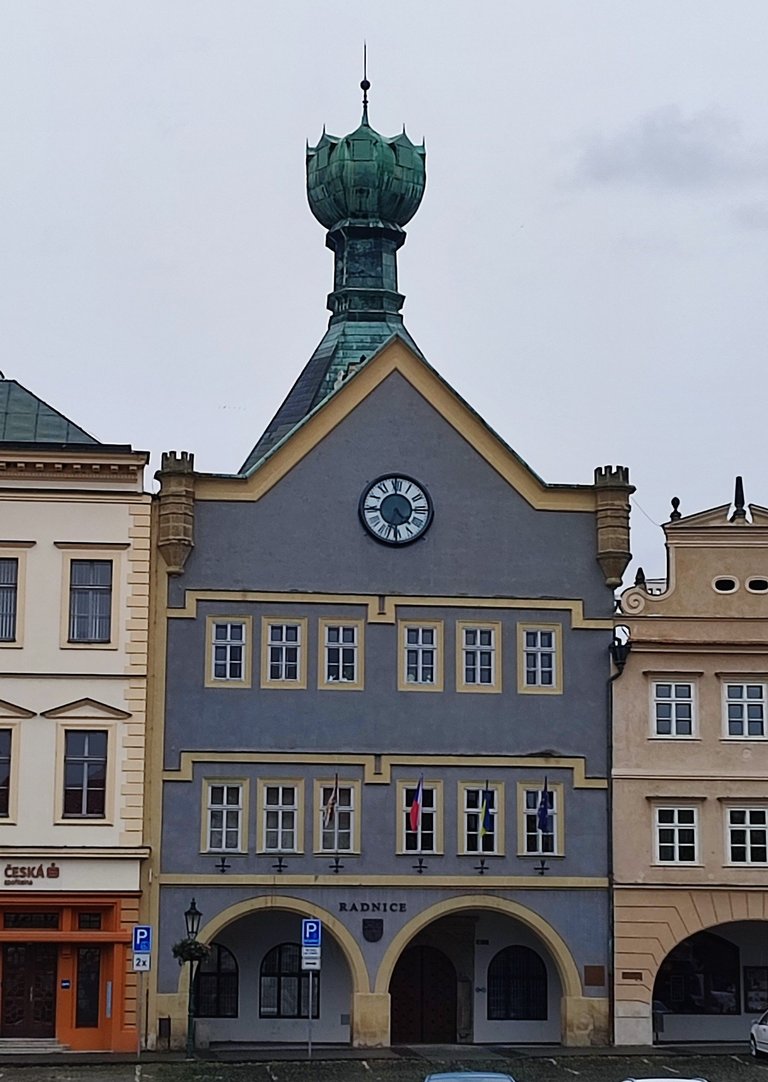
Na mieste dnesneho kostola vsetkych svatich stavala najstrarsia stavba v meste. Jednalo sa taktiez o kostol z 12 storocia ktory bol sucastou povodnych hradieb mesta.
On the site of today's Church of All Saints, the strongest building in the town was built. It was also a church from the 12th century, which was part of the flood walls of the city.

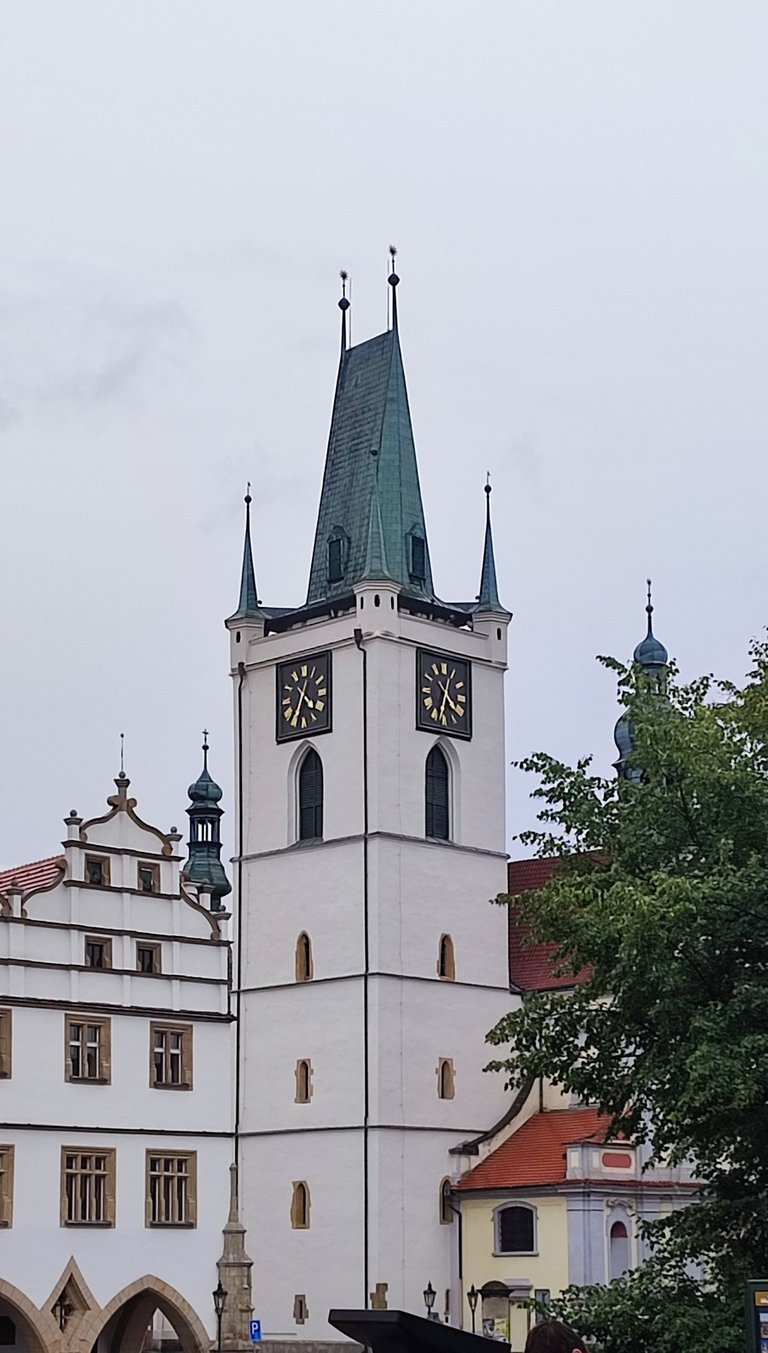
Prvá dochovaná zmienka o kostole všetkých svätých bola z roku 1235, odvtedy prešiel mnohými prestavbami.. gotickou, utrakvistickou a nakoniec renesančnou.
The first preserved mention of the Church of All Saints dates back to 1235, since then it has undergone many reconstructions... gothic, utraquist and finally renaissance.
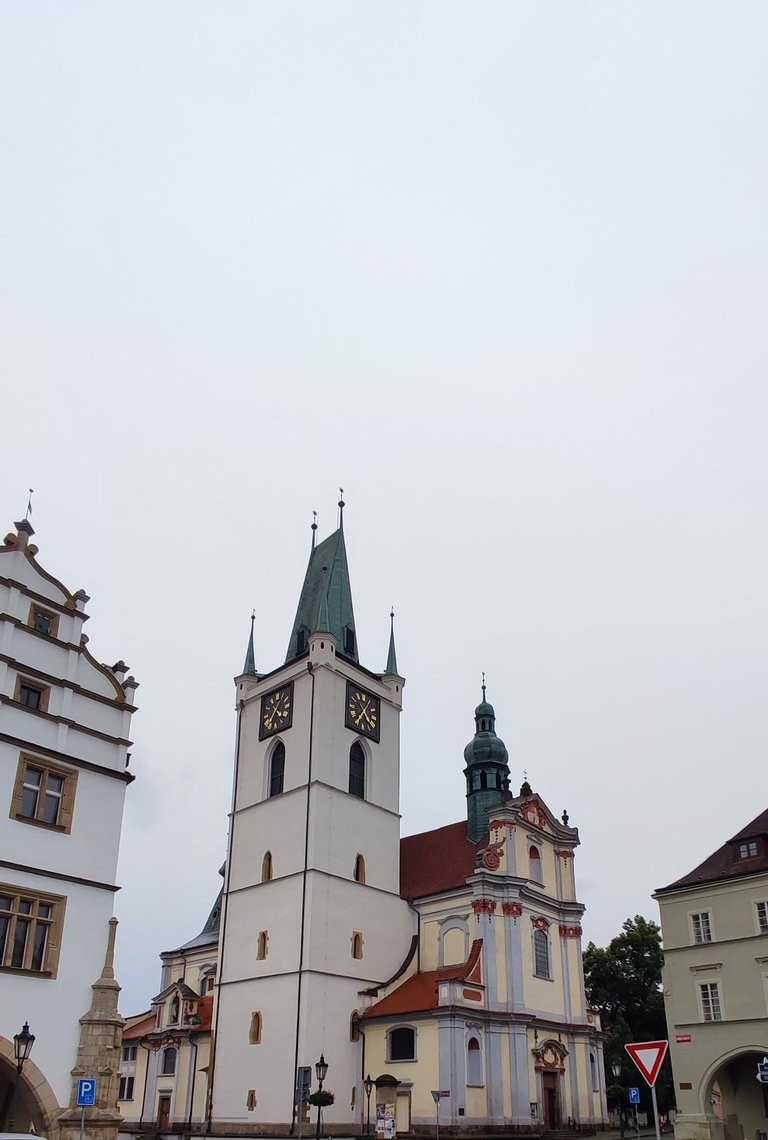
Ako môžete vidieť exteriér kostola je veľmi členitý z rôznymi zárodkami slohov, výklenkami, ktoré sú v interiéry kapsličkami. Taký mišmaš naprieč históriou.
As you can see the exterior of the church is very articulated from the various embryonic styles, niches that are capsules in the interior. Such a mishmash across history.
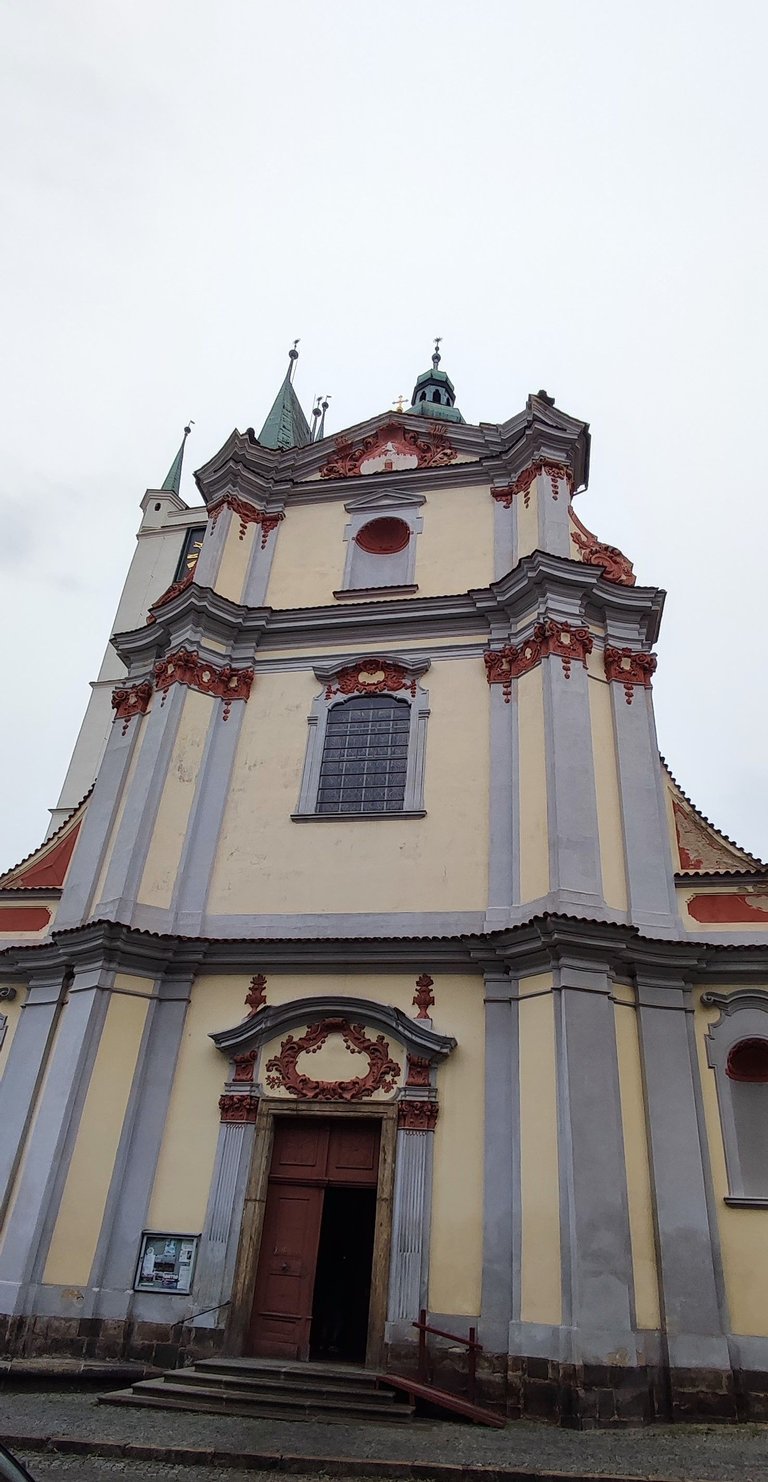
Okolo roku 1350 tu začal kázať Konrád Waldhauser (predchodca Jana Husa),
ktorému starostlivosť o kostol venoval Karel IV.V roku 1480 prešiel kostol gotickou prestavbou, v roku 1501 sa začala prestavba kostolnej veže, ktorá postupne pokračovala počas celého 16. storočia, keď bola v roku 1554 prestavaná veža s vežovými hodinami a v roku 1584 s vežičkami.
Around 1350 Conrad Waldhauser (the predecessor of Jan Hus) began to preach here,
In 1480 the church underwent a Gothic reconstruction, in 1501 the reconstruction of the church tower began, which gradually continued throughout the 16th century, when the tower with the tower clock was rebuilt in 1554 and in 1584 with the towers.
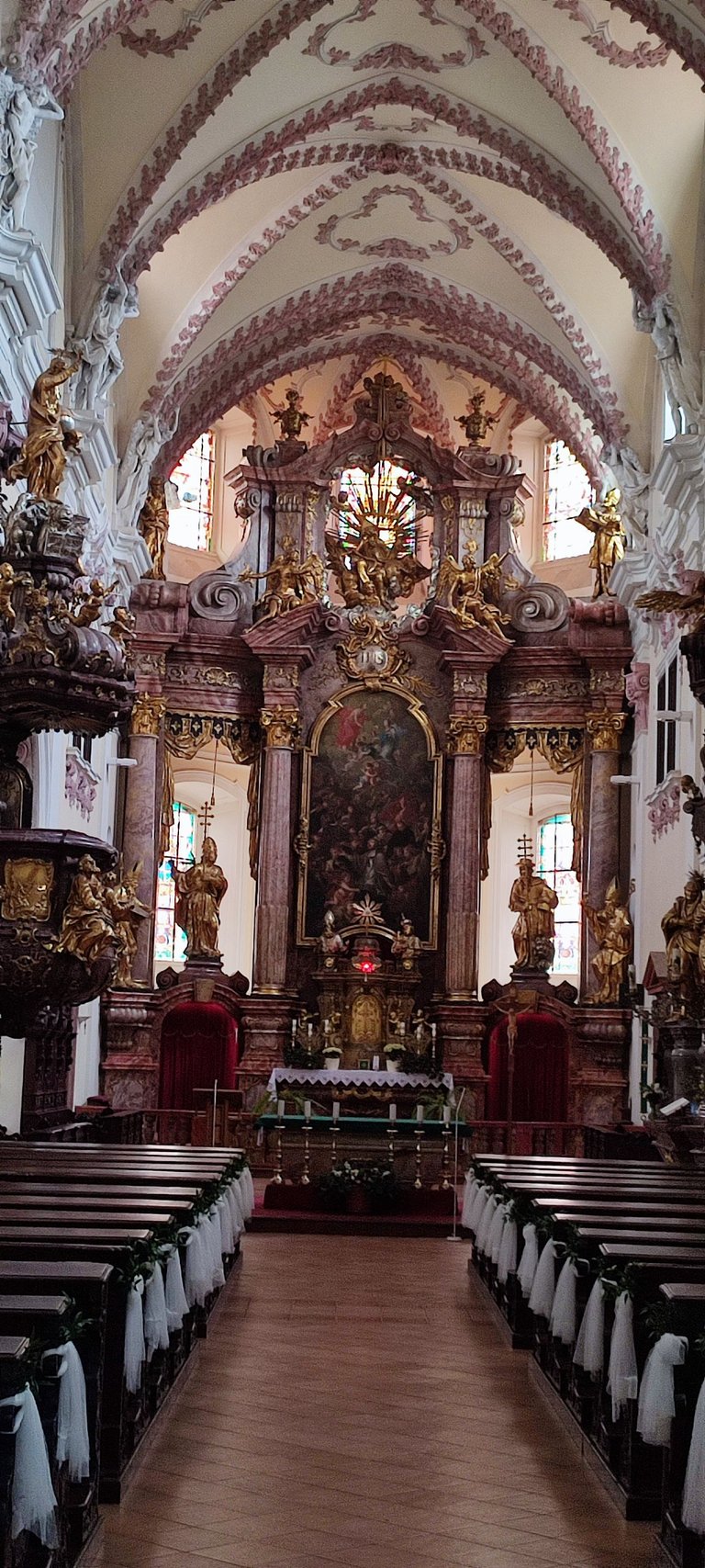
Interiér je ozajstný skvost. Dominantný v hlavnej lodi je rokokový oltár z rokov 1740–1746.
The interior is a real gem. The main nave is dominated by a rococo altar from 1740-1746.
Dom u Černeho orla bol postavený pre Dionýsia Housky v gotickom slohu v 14 storočí. Časom zmenil majiteľa a bol znova prestavaný do renesančného slohu rodinou Divišovských. Ďalším majiteľom sa tento krát stal Šimon Petr Oulík z Třebenic. Tento pán bol kráľovsky richtár. V roku 1628 cisár Ferdinand II udelil na Dom u Černeho orla cisársku výsadu richtárskeho sídla. Taktiež sa naň nevzťahovali bežne dane, len desiatky.
The House of the Black Eagle was built for Dionysius Housky in the Gothic style in the 14th century. Over time it changed hands and was rebuilt again in the Renaissance style by the Divišovský family. The next owner this time was Šimon Petr Oulík from Třebenice. This gentleman was a royal richtár. In 1628, Emperor Ferdinand II granted the imperial privilege of a richtár's residence to the House of the Black Eagle. It was also not subject to ordinary taxes, only tithes.
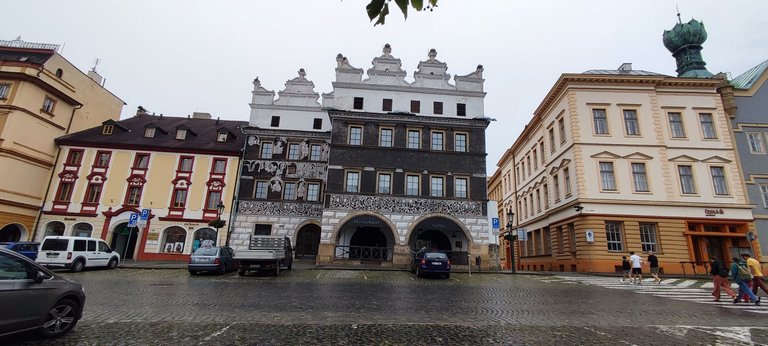
Dom u Černeho orla je dvojposchodový z rohovým priečelím. To s neho robý výnimočnú stavbu, ktorá prešla podobnou históriou ako väčšina stavieb... Povodne jadro v gotickom slovu prerobene do neskorej renesancie... Výnimočne sú grafitové farby a fresky. Za to sú zodpovedný stavbári a štukatéri zo severného talianska terajšieho Švajčiarska, ktorý zrealizovali projekt Ambrosia (Ambrož) Balliho.
The house at the Black Eagle is two-storey with a corner frontage. This makes it an exceptional building, which has undergone a similar history as most of the... The flooded core in the Gothic word remodelled in the late Renaissance... Exceptional are the graphite colours and frescoes. The builders and plasterers from northern Italy, now Switzerland, are responsible for this Ambrosia (Ambrose) Balli's project.
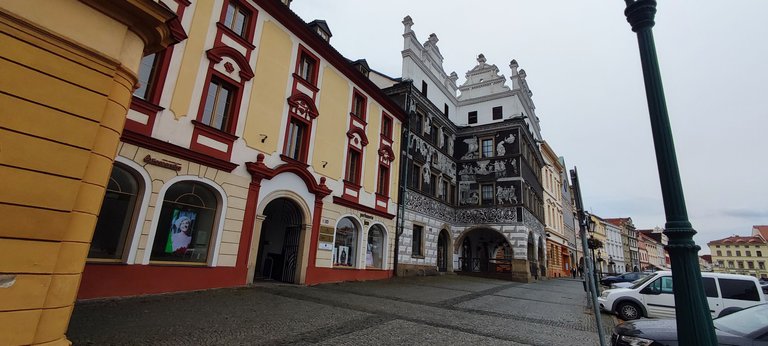
Mestské hradby boli široké 2 metre a miestami vysoké až 10 metrov, na prechádzke po nich môžeme stretnúť súsošia, packaný a bašty. Tie vytvárajú romantické prostredie spojene z pekným výhľadom na zvyšok mesta.
The city walls were 2 metres wide and in some places up to 10 metres high, and on a walk along them we can see sculptures, bastions and bastions. These create a romantic setting with a nice view of the rest of the city.
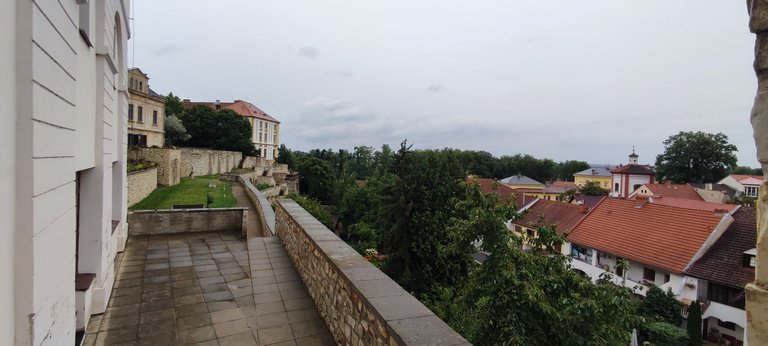
Packaný v terajšej dobe slúžia ako odpočinková zóna pre návštevníkov,
sú pomenovane po Filipínskom doktorovi José Rizalovi
Packaný currently serves as a rest area for visitors,
named after a Filipino doctor Jose Rizal
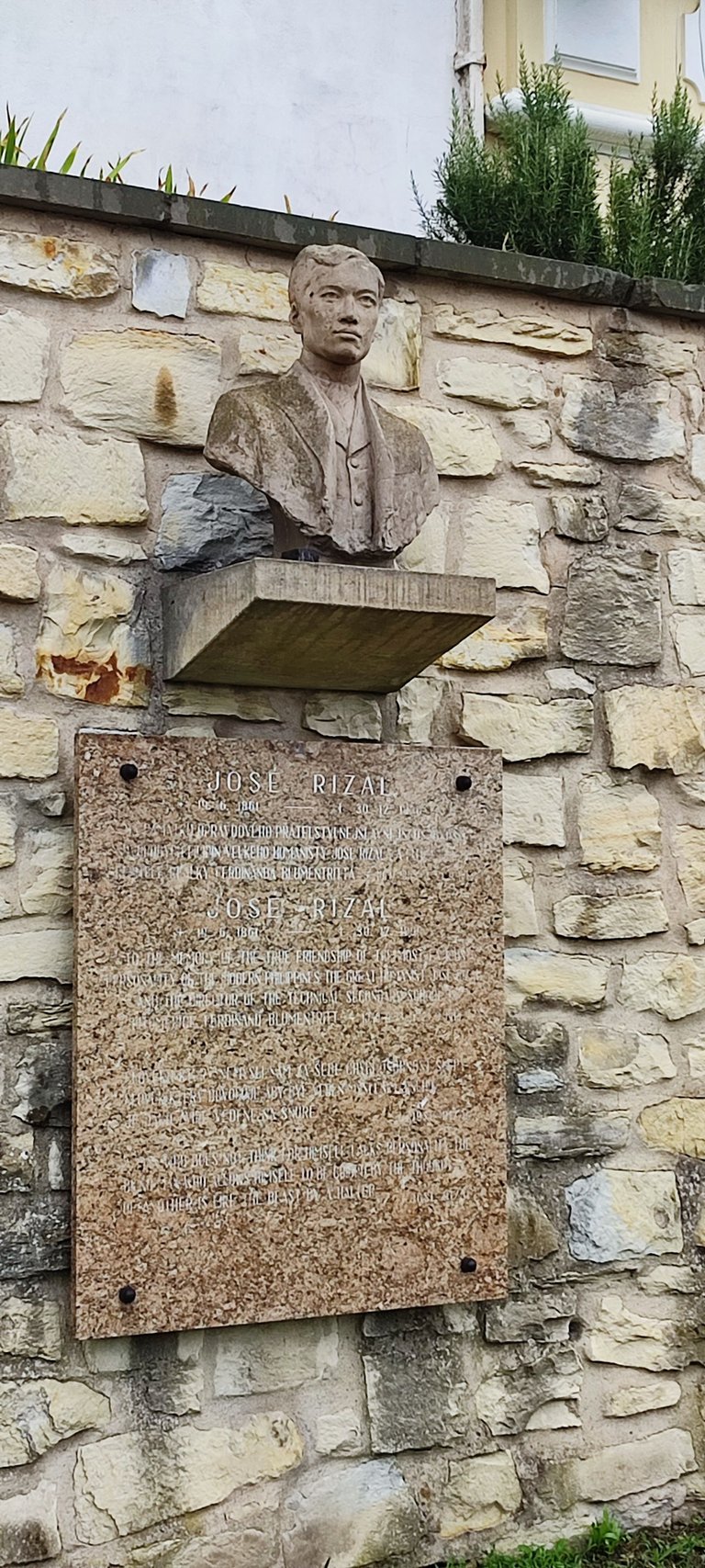

Na jednom z parkanov sa nachadza socha venovana basnikovy Karel Hynek Mácha, ktory v Litoměřicich prezil prevaznu cast zivota a kde aj vznikla vacsina jeho poezie.
On one of the parks there is a statue dedicated to the bass Karel Hynek Mácha, who lived most of his life in Litoměřice and where most of his poetry was written.

Vstupní kamenné schody nazývane Jezuitske schody, sú v jednej osi v pôvodným mostom cez Labe.
The entrance stone stairs called the Jesuit stairs are in one axis in the flood bridge over the Elbe.
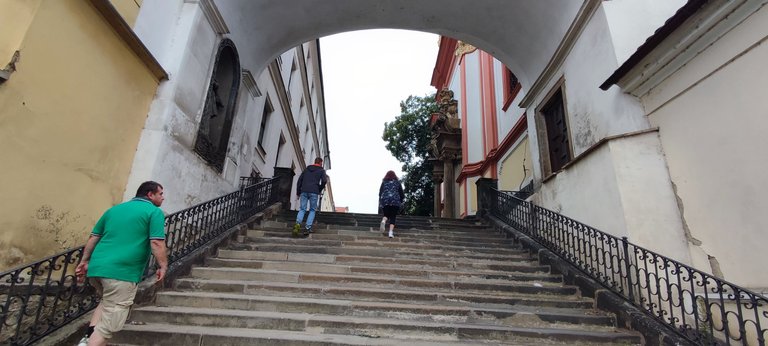
Mestská kašna sa skladá z dvojice kašen, ktoré sú chránene ako česká kultúrna pamiatka. Ich vznik sa datuje do roku 1541 kedy vznikli ako súčasť mestského vodovodu, ktorý privádzal vodu do viníc pod Radobilem.
The town fountain consists of a pair of fountains, which are protected as a Czech cultural monument. Their origins date back to 1541 when they were built as part of the town's aqueduct, which brought water to the vineyards below Radobil.
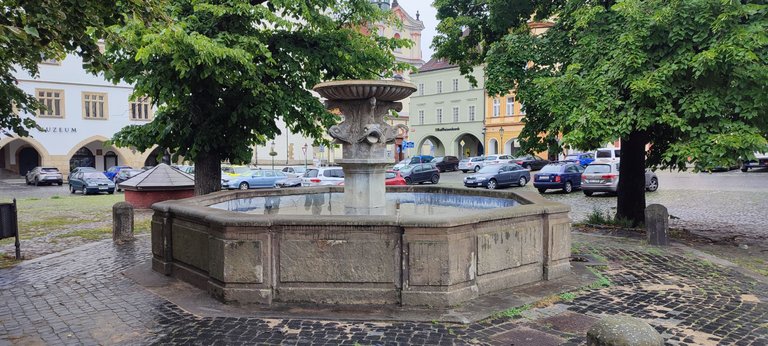
V roku 1680 postihla českú republiku morová nákaza. Na pamiatku obetiam postavili v meste moroví stĺp. O jeho projekt sa zaslúžil Giulia Broggia, sochár Abrahamem Kitzingerem z Děčína a litoměřickými kameníky Andreasem Koldererem a Ambrožem (Ambrosio) Waldem postavene barokové súsošie
In 1680, the Czech Republic was struck by a plague. A plague column was erected in the town to commemorate the victims. It was designed by Giulia Broggia, sculptor Abraham Kitzinger from Děčín and built by Litoměřice stonemasons Andreas Kolderer and Ambrose (Ambrosio) Wald, a Baroque sculpture

Nedeliteľnou súčasťou mesta je aj zámok Litoměřice, na ktorý som žial nemal čas a nemám ani jednu normálnu fotku. A tak som si vypomohol googlom, presnejsie strankou https://cs.wikipedia.org/wiki/Litom%C4%9B%C5%99ice_%28hrad%29
An integral part of the town is also the Litoměřice castle, which unfortunately I didn't have time to visit and I don't have even one normal photo. So I used Google, more precisely the website https://cs.wikipedia.org/wiki/Litom%C4%9B%C5%99ice_%28hrad%29
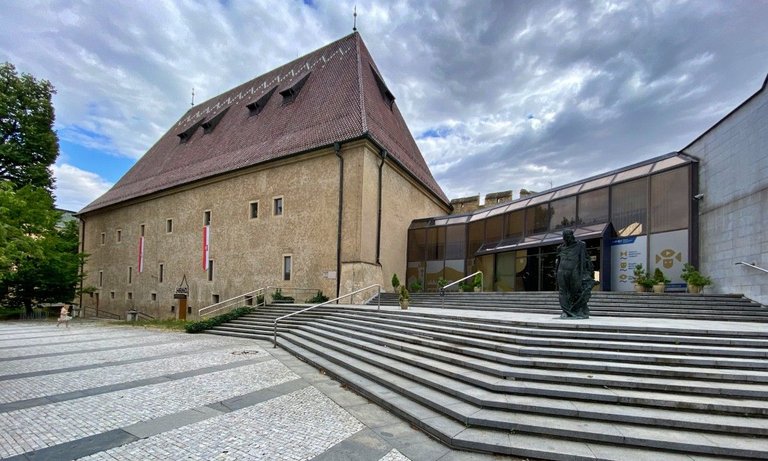
ZDROJE:
https://sk.wikipedia.org/wiki/Litom%C4%9B%C5%99ice
https://www.google.com/maps/d/viewer?mid=1dBAOmngy5sZQK6NbrwSrxs2vapg&hl=en_US&ll=50.53324916749738%2C14.137109771894542&z=16https://www.google.com/search?q=litomerice+praha+vzdialenost&sca_esv=561023782&sxsrf=AB5stBi6dMhn0XfN_GAR0zZT-UFpD6n6IQ%3A1693323586454&ei=QhHuZPfSGs3r7_UP4bObkAo&oq=litomerice+praha+vzdia&gs_lp=Egxnd3Mtd2l6LXNlcnAiFmxpdG9tZXJpY2UgcHJhaGEgdnpkaWEqAggAMgUQIRigATIFECEYoAEyBRAhGKABSPdGUKQEWKM5cAF4ApABAJgBtwGgAewOqgEEMC4xM7gBAcgBAPgBAcICBBAAGEfCAggQABiABBjLAcICBRAuGIAEwgIFEAAYgATCAgsQLhivARjHARiABMICCBAuGIAEGMsBwgIGEAAYFhgewgIIEAAYFhgeGA_CAgcQABgTGIAEwgIIEAAYFhgeGBPCAggQABiKBRiGA-IDBBgAIEGIBgGQBgg&sclient=gws-wiz-serp
https://www.litomerice.cz/infocentrum
https://litomerice-leitmeritz.net/autori/karta/jmeno/19-ambrosio-ambroz-balli
https://www.kudyznudy.cz/aktivity/mestske-hradby-a-parkany-v-litomericich
https://sk.mapy.cz/zakladni?source=base&id=1899187&x=14.1334379&y=50.5320904&z=17
Krásný článek. Možná by jsi to mohl připnout na mapu na pinmapple
V Česku a na Slovensku je mnoho krásných míst a je skvělé, když se člověk podělí o své zážitky a inspiraci na cesty.
Za posledních pár měsíců se ta mapa Česka a Slovenska celkem rozšírila.
Ďakujem, o tej mape som vôbec nevedel. Ako ste mysleli "prepnúť mapu"?
Omlouvam se. To byl překlep. Myslela jsem připnout.
Ešte mam fotky z Terezina, Osvienčima a Prahy. Ďakujem za tip, v ďalších článkoch použijem mapu, ktorú ste mi odporučili.
Jinak přidání není těžké. Stačí jít na stránku kliknout na get code a vybrat lokalitu. Pak jen stačí zkopírovat vygenerovaný kód a vložit jej kamkoliv do článku a tím se to přidá na tu mapku.
Mají i svoji vlastní komunitu, která je hodně populární. Jen mají podmínku mít článek v angličtině a může k tomu být i druhý jazyk.